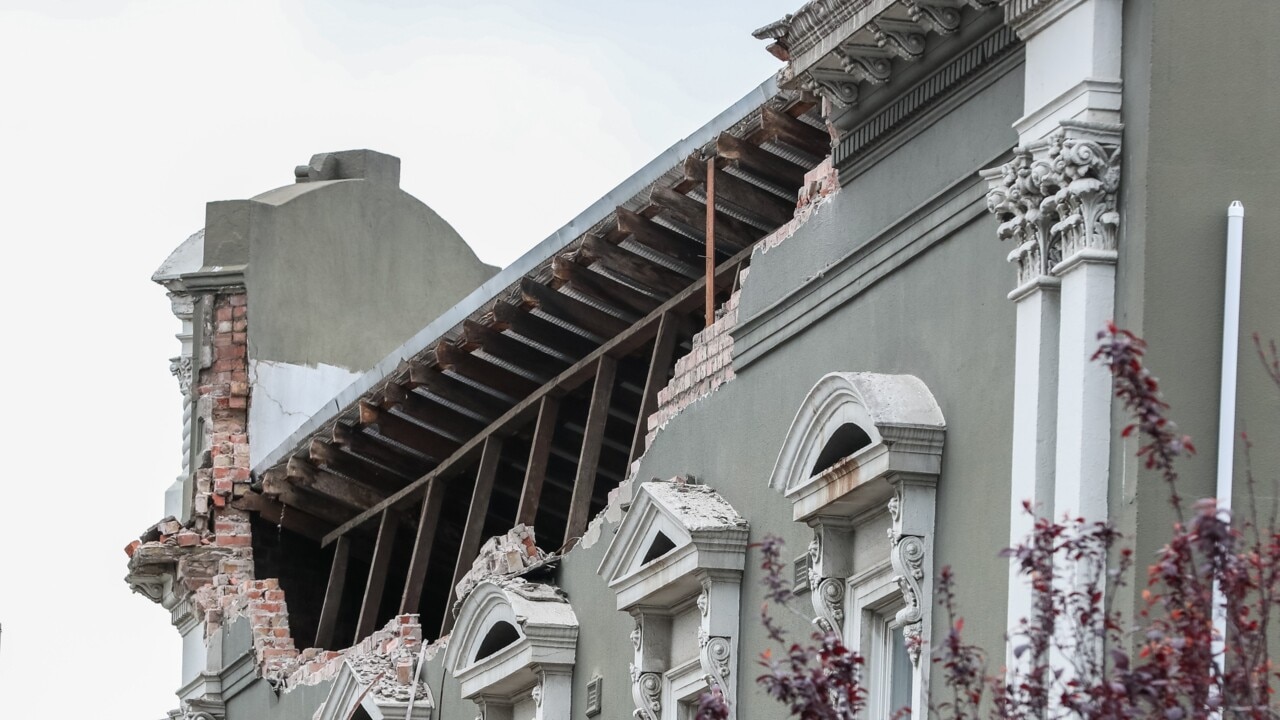Seismologist answers seven of Victoria’s most commonly asked earthquake questions
From what creates the ‘loud bang’ to whether the ‘big one’ is on its way, a seismologist has answered some of Victoria’s most raised earthquake queries.

Seismologist and chief scientist at the Seismology Research Centre, Adam Pascale spoke with the Herald Sun to help answer some of the state’s most-asked earthquake questions.
Why is Victoria having so many Earthquakes?
Earthquakes are rattling Australia’s southeast up to 40 times weekly, with parts of Victoria, Tasmania, South Australia and New South Wales recording at least 30 tremors in the past week.
While these figures seem extreme, Mr Pascale said the rate of earthquakes aren’t changing, rather they’re just occurring closer to populated areas.
“We’re seeing that most of those (quakes) are very, very small. They’re much, much smaller than people will feel,” he said.
“We probably have a few magnitude twos every week or sometimes we’ll go without one … but the big earthquakes happen less frequently.”
Is the “big one” on its way?
While most assume all these little earthquakes are leading up to the “big one”, Mr Pascale said this is not the case.
“We usually do have what we call swarms of earthquakes … where in some weeks we have little clusters of earthquakes happening in particular areas, but they don’t tend to build up,” he said.
In contrast, Mr Pascale said if a larger earthquake hits like a 5.9 magnitude one seen in Rawson in 2021, it can trigger other faults nearby to “fire up and have activity”.

What creates the “loud bang” people hear?
Those residents living close to the epicentre of an earthquake typically report hearing a loud rumbling sound or bang as the earth shakes.
Mr Pascale said this sound happens as a result of a sound wave created when the “earth breaks”.
“Imagine it like the surface of the earth is like a speaker current. A speaker makes a sound by pushing air, so when you’re really close that initial push of the Earth creates a sound wave in the local area. It doesn’t travel too far, but that’s the bang that people hear,” he said.
“Further away you might hear a rumble but that’s more likely the sounds of buildings shaking and things like that.”
Are there suburbs more prone to earthquakes?
Mr Pascale said quakes are most likely to occur in areas where there are hills and mountains, most of which have been “created by earthquakes over millions of years”.
Friday’s earthquake occurred in the north end of the Brisbane Rangers, just south of Bacchus Marsh, which is an area prone to tremors.
“That area has had a number of earthquakes over the years - the largest was a magnitude of 4.7 back in 1977,” he said.
“So wherever you’ve got the Dandenong Ranges and all throughout the Great Dividing Range – wherever you’ve got mountains – you’re more likely to have earthquakes more frequently.”

Are earthquakes dangerous?
After observing the damage earthquakes have caused overseas, it’s understandable that many Victorians are worried, however Mr Pascale said the tremors themselves aren’t the problem.
“Earthquakes themselves aren’t dangerous, it’s how our buildings react to that,” he said.
“The danger to humans is the infrastructure that tends to be affected by (earthquakes) so if you’re in a building you know, things falling off shelves or the actual buildings collapsing – that’s what’s dangerous.”
Typically it takes a quake of magnitude four or higher to cause such damage, which Mr Pascale said isn’t seen very often.
Will the number of earthquakes increase in the future?
While earthquakes in Victoria seem to be occurring more frequently, the seismologist said there’s no indication the frequency of tremors will increase in the future.
“When we look at those geological timescales over hundreds, thousands, millions of years, the rate of earthquakes is pretty consistent so it doesn’t really change,” Mr Pascale said.
“How many of those quakes we feel will depend on where we are, the more populated we are, and the closer we are to those mountainous regions.”
How should I prepare for an earthquake?
As more earthquakes rock the state, Victorians are encouraged to learn how to protect themselves from strong shaking.
“You should drop, cover and hold on (if you feel a strong tremor) or basically get under a table and protect yourself from things falling on you,” Mr Pascale said.
Geoscience Australia added it’s important to shield vital organs by bending over and using your hands to protect your head and neck.
Mr Pascale also said the state should look at earthquake-proofing its infrastructure to ensure it can “withstand strong shaking”.
“That’s the main thing that we can do to build a safer society for earthquakes,” he said.
Those who feel an earthquake are advised to report it to Geoscience Australia via its website.



